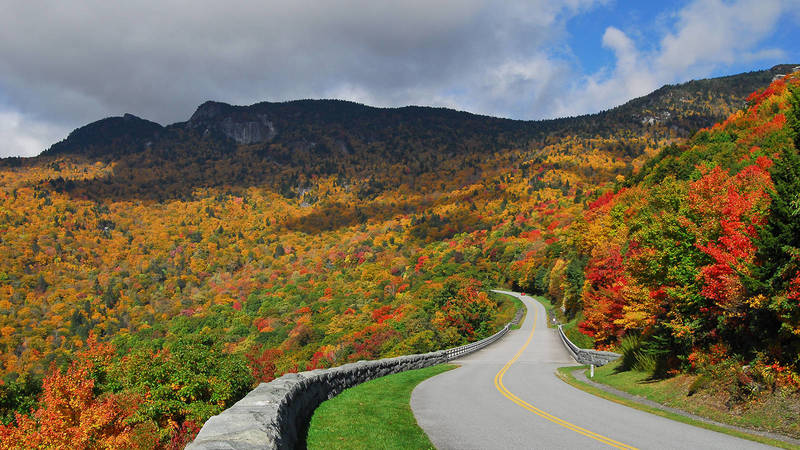More than 21,000 Park Service staff have been furloughed indefinitely, and the park rangers who still have jobs are taking heat for doing their jobs.
Our national parks provide visitors with a window into America’s history, natural beauty, and cultural diversity. However, when the government shut down on October 1, all 401 national park sites closed. Overnight guests were asked to leave, visitors are being turned away at entrance gates, and more than 21,000 National Park Service employees have been furloughed indefinitely.
“It was not the National Park Service’s choice to close the parks, but Congress’. Unfortunately, some people were blaming the National Park Service for denying access. It wasn’t easy to ask people to leave; we wanted the people to enjoy the public lands.”
-Alan O'Neill, former superintendent of Lake Mead National Recreation Area
One of the most visible effects of this shutdown is the blocked entrance gates at national parks and monuments that are turning away an estimated 750,000 visitors a day, including frustrated veterans, heartbroken brides, and disappointed school children. Another story worth telling is the emotional and financial toll on Park Service employees, especially on the heels of a challenging sequester that deeply cut park budgets, coupled with the threat of continued cuts.
The current government shutdown has Alan O’Neill, a retired superintendent from Lake Mead National Recreation Area, reminiscing about impacts from the shutdown in 1995/1996. “It was not the National Park Service’s choice to close the parks, but Congress’,” he stated. “Unfortunately, some people were blaming the National Park Service for denying access. It wasn’t easy to ask people to leave; we wanted the people to enjoy the public lands.”
Earlier this week, park officials notified guests arriving for special events about potential cancellations. Low-income children from nearby communities were scheduled to arrive at Chiricahua National Monument in Arizona for a program called “Parks in Focus,” a partnership between the local Boys and Girls Club and the National Park Service to provide an experience in the parks and learn about photography—one of the many events that has since been called off.
“Some of the partnerships we have been working on for months or even years,” says Estee Rivera Murdock, Community Engagement Park Ranger at Saguaro National Park. “It was hard to make the call to several family and youth groups earlier this week informing them that their event might be canceled due to the government shutdown.”
As the liaison with Friends of Saguaro National Park, Murdock also had the difficult job of informing the non-federal employees within the park boundaries that they would not be able to come to work either because of the park closure. Numerous other park partners were affected as well. “This is difficult for me, but I especially feel terrible about some of the student employees who are out of work, some of whom are working more than one job to make ends meet. One of my coworkers is an undergraduate student who works part-time for the bookstore and part-time for the park. With the park closure, this student will not be working either job, which must be hard on this young lady, since many of our student employees live paycheck to paycheck.”
Murdock herself is classified as a “non-essential” employee and has been furloughed until Congress takes action to resolve the budget impasse. This has not only been difficult for her, but also her husband, who does contract work with the government.
“You can’t imagine the pain it causes for someone to not know when their next paycheck will arrive,” says O’Neill. “Additionally, the non-essential status weighs on a person’s sense of well-being. It makes them feel not important and of no worth.”
The government shutdown makes a bad situation even worse for our national parks. Last year was the third straight year of budget cuts for the National Park Service. Before the shutdown, the parks were already operating 13% below 2010 levels in today’s dollars. If Congress passes a short-term budget deal, it will continue sequester levels, and parks will continue to be affected, including the staff.
“When the parks reopen, I will be furloughed for at least two pay periods if the sequester cuts continue,” says Ms. Murdock. “So not only will I not be paid for the days I miss during the shutdown, but also for at least a month in the coming year.”
The entire federal budget process is broken, and as a result, our national parks, park staff, visitors and gateway businesses are being hurt. Congress needs to work with the administration to find a solution to reopen the parks—and put an end to the yearly cuts that are damaging our national treasures and the people that protect them.
You can urge your members of Congress to re-open parks and support full funding for the Park Service by taking action on NPCA’s website.
About the author
-
 Emily Douce Director of Budget & Appropriations, Government Affairs
Emily Douce Director of Budget & Appropriations, Government AffairsAs the Director of Budget & Appropriations for the Government Affairs team, Emily Douce researches and advocates for additional funding for the national parks, both through appropriations and supplementary sources.
-
Issues


